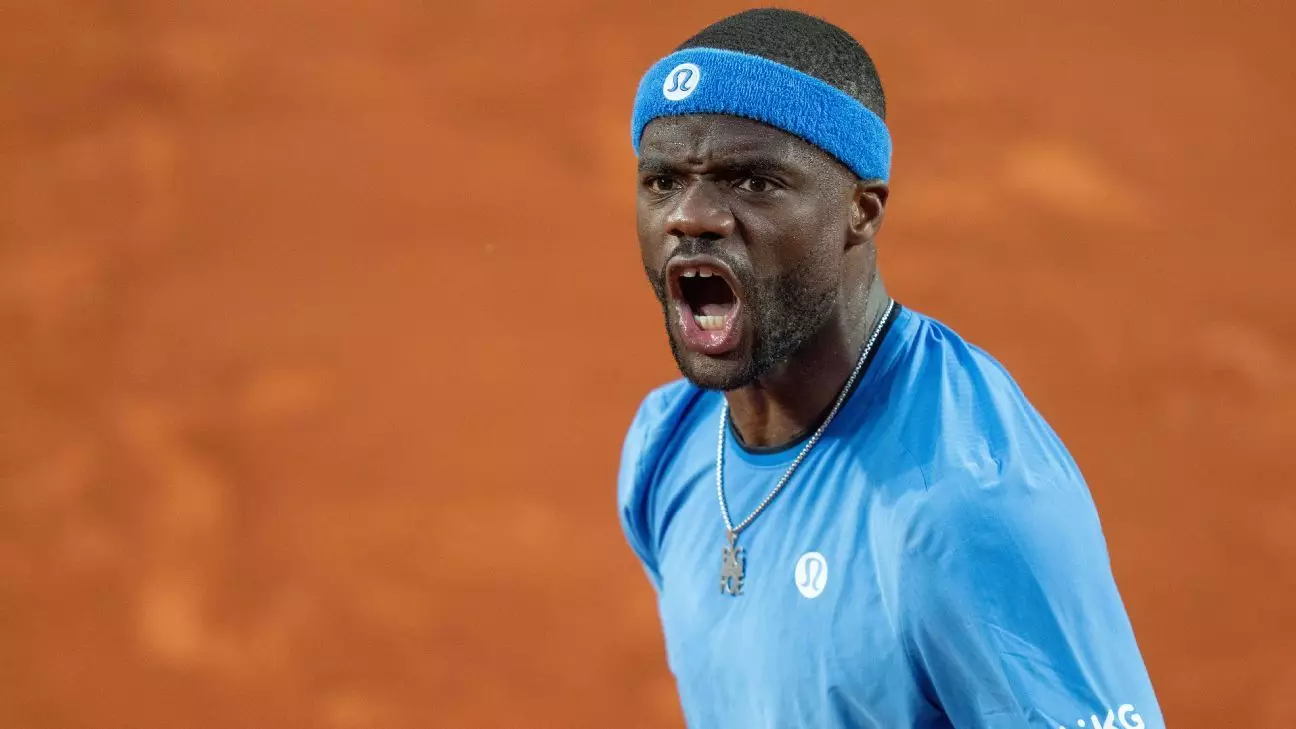Frances Tiafoe entered the 2023 French Open with a cloud of self-doubt hovering over him, a sentiment he candidly expressed prior to the tournament. His dismissal of clay as a surface that “doesn’t matter” reflects an underlying frustration with his previous experiences on the red courts of Roland-Garros. Yet, in an incredible twist of fate, the 15th-seeded Tiafoe has transformed his narrative, demonstrating that sometimes, profound change is just around the corner in the world of sports.
With his recent victory over Germany’s Daniel Altmaier—achieved with a confident scoreline of 6-3, 6-4, 7-6 (4)—Tiafoe has not only reached the quarterfinals of the French Open for the first time, but he has done so without losing a single set. This remarkable achievement places him alongside fellow American Tommy Paul, marking a historic moment when two U.S. men have advanced to this stage of the tournament since the days of legends Jim Courier and Pete Sampras in 1996.
A Historic Moment in American Tennis
The significance of Tiafoe’s accomplishment extends beyond mere statistics. His success underscores the revival of American men’s tennis at a time when the sport has often seemed dominated by foreign players. The absence of U.S. men in the quarterfinals for nearly two decades—last seen with Andre Agassi in 2003—has raised questions about the vitality of American tennis. Now, with Tiafoe and Paul breaking through, a fresh wave of optimism emerges, suggesting a potential renaissance for American players on the international tennis stage.
Tiafoe’s trajectory has been anything but straightforward. Starting with an 0-6 record at the French Open prior to this year’s tournament, he has faced significant hurdles on this slower surface, often struggling to adapt his aggressive style to clay’s unique demands. Speaking candidly about his previous lackluster performances, he admitted that on clay, “the court doesn’t help me play as fast as I would like,” revealing a vulnerability that many athletes face when navigating the pressures of elite competition.
The Inner Drive for Greatness
What sets Tiafoe apart is not merely his tennis prowess but an innate understanding of his potential for greatness. The 27-year-old athlete from Maryland hints at an introspective side during press interactions, stating, “When I’m backed up against it, it seems like I start to produce my best tennis.” This notion of rising to the occasion is not just a mindset but a manifestation of his determination to carve out a legacy. Tiafoe’s belief in his capability to beat anyone “on any specific day” is both motivating and relatable; it paints a portrait of an athlete who knows that perseverance can lead to success.
As he prepares for his upcoming clash against stiff competition in either No. 8 Lorenzo Musetti or No. 10 Holger Rune, Tiafoe’s confidence is palpable. He embodies the spirit of a player who thrives on challenges, eager to prove that his previous anxieties about clay courts are bygone concerns.
Broader Implications for American Tennis
The success of Tiafoe and his contemporaries opens the door to further achievements for American tennis. With the likes of Coco Gauff, Jessica Pegula, and Madison Keys also making waves in the women’s draw, American tennis is not merely taking its place on the global stage but demanding attention and respect. Perhaps we are witnessing the dawn of a new era in which both men and women can claim their rightful position in the sport they love.
Moreover, the excitement surrounding Tiafoe’s wins resonates beyond the court. It encourages aspiring players by illustrating that every setback can be a setup for a remarkable comeback. Tiafoe’s journey from self-doubt to quarterfinal contender encapsulates a universal truth: resilience is a powerful tool in achieving one’s dreams.
In this evolving landscape of American tennis, Tiafoe’s story serves as a beacon of hope, inspiring both current players and emerging talent to dream big and embrace the hard work required to succeed. The stakes are higher than ever, and with Tiafoe leading the charge, it seems that the future has never looked brighter for American tennis.


Leave a Reply